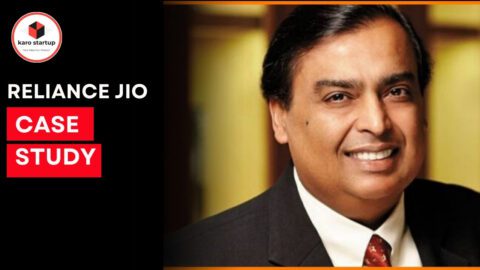India’s most celebrated festival season, Diwali (also known as Deepavali), has arrived, and as always, it brings happiness to the life of every Indian, regardless of their religion. The festival of light not only lights up the homes and the streets but also the economy and startups of India in every corner and all the way. From record-breaking sales in e-commerce to increased demand for Gold, Diwali is more than just a festival. Diwali affects every aspect of the Indian Economy and startup Ecosystem like Muhurat Trading of the stock market and the burden on the supply chain due to huge demands.
Diwali: In numbers
Diwali isn’t just a festival of lights, it’s also a festival of immense economic activities. According to the Confederation of All India Traders (CAIT), the 2023 Diwali season sales have generated ₹3.75 lakh crore in revenue and this number is expected to increase to ₹4.25 lakh crore this festive season. In the last 8 years, it has increased approx 10 times, which is a huge increase in comparison to anything.
Let’s see the increase in Diwali sales in the last 8 years to understand its true impact on India’s economy.

In 2017, the sales during Diwali stood at approx ₹43,000 Crore, which next year increased to ₹50,000 Crore, and now India witnesses a sale of ₹4.25 Lakh Crores during the Diwali season.
In 2024, Delhi alone is expected to witness a business of ₹75,000 Crore which is itself more than the total sales of all over India in 2017.
Let’s its economic impact in comparison to the globe:
Economic impact comparison to internationally
Now, you were thinking that the economic impact of Diwali is huge and it is not comparable to any country, but hold on!
Diwali’s economic impact is humongous but it’s still outpaced by some international counterparts. Let’s take an example of China’s Spring Festival, during the monthlong 2024 national online Spring Festival shopping season, China’s online retail sales earned 1.2 trillion yuan (about 168.86 billion U.S. dollars). If we take the second example of the US Christmas and holiday season, spanning a longer period, in 2024, it is expected to see retail sales exceed $1 trillion.
These comparisons highlight the potential for growth in India’s festive economy, which is growing at a fast pace. I mean let’s look at India’s Diwali sales in 2017 which were just ₹43,000 crore and within 7 years it grew to approx 10 times. Let’s hope India’s Festival economy thrives more and competes with China’s and the US’s Festival economy.
Sectors impacted
You have understood the Diwali economy of India and now you were thinking what exactly does India’s Diwali economy look like? Let’s break it down into sectors and dive deep into it. For a better understanding let’s take an example of the Diwali festival sale of 2023, break it down and start exploring it sector-wise.

Diwali’s Retail Explosion
One of the biggest beneficiaries of Diwali economic impact is the Retail sector, which is expected to clock a revenue of ₹1,20,000 crore in the festival period of 2024.
And for your information, just during the first week of festive sales, e-commerce marketplaces sold goods worth $6.5 billion, or almost ₹55,000 crores. That’s a 26% increase from last year.
The retail explosion was not restricted to major cities. The high demand was also found in Tier II cities and beyond. Platforms like Meesho claimed that approximately 45% of buyers came from cities in Tier 2 and above. Also, QuickCommerce is helping further to meet the festival demands, with the platforms expanding their 24×7 delivery services during the festive season.
High Demand for Gold and Jewelry?
Buying gold on Diwali is significant as per Indian tradition but this year it is not the same. Experts are expecting a 12- to 15% drop in the demand for Gold during Diwali. Historically India has observed an increase in the price of Gold during Diwali.
The same trend of the increase in Gold prices is being seen now, with the MCX gold rate hitting a new record high of around ₹77.8k per 10 gm last week. Since the last festive season, gold prices have risen by more than 25%.
Last year, the demand for jewelry was 9% of the total Diwali Festival sales in 2023 which is significant.
Rush in Real Estate
The real estate market experienced a significant boost during Diwali, this season continues to be a prime time for India’s real estate market, driven by both traditional and smart marketing strategies.
In this season Developers play smart marketing strategies like complimentary parking spaces, GST waivers, and even luxury perks like gold coins or cars with property purchases to attract more customers for the purchase of real estate. And the buyers also fall for it because many received their annual bonuses during this period, making it easier to handle down payments.
In Delhi-NCR reason residential projects worth ₹1 lakh crore are expected to be launched during this festive period. What makes this particularly interesting is that they’re pushing ahead with these launches despite housing sales dropping 11% in the previous quarter (July-September) because they are taking this time positively due to the Diwali season and year-end bonuses.
Automobiles and Sweet Industry
Diwali is considered an auspicious time for big purchases. India’s automotive sector witnesses a Diwali-driven boom, accounting for 30% of yearly sales. Automakers leverage this festive demand with substantial discounts, intensified by an inventory overhang of ₹79,000 crore.
Top brands offer discounts of up to ₹2 lakh on bestsellers, triggering a 4x spike in showroom visits and a 3-4x increase in inquiries and bookings, as per dealers.
We are talking about Diwali then how can we forget the Soanpapdi? Imagine a typical Indian home on the eve of Diwali. Sweets fill the air–boxes on the dining table, more in the fridge, and plenty to share. Now, magnify this scene across millions of households nationwide.
Indians have a sweet tooth, especially during Diwali. The festive season accounts for a staggering 30-35% of sweet shops’ annual revenue, according to media reports. This brief period generates almost a third of their yearly sales in just a few weeks.
Impact on Supply Chain
As we know India sees a surge in consumer spending due to one of the country’s biggest celebrations, Diwali. This spike puts extra pressure on supply chains to keep up with timely deliveries. While businesses gear up for the increased demand, they also face some supply chain challenges along the way.
Diwali festival brings supply chain disruptions due to:
- Reduced manufacturing capacity due to labor shortages
- Logistics slowdowns from staffing shortages
- Congestion and delays at ports and terminals
- Shipping schedule changes and potential blank sailings
- Increased freight costs
Stock Market: Diwali Muhurat Trading
As Diwali reaches its peak, India’s stock market joins the festivities with a special one-hour trading session – Muhurat Trading. This tradition, dating back to 1957, aims to kick-start the Hindu financial year on an auspicious note.
Investors believe that beginning with a positive trade sets the tone for the year. This mindset creates a “positive bias,” driving buyers to place orders. Historical data supports this trend:
- BSE Sensex has closed higher in 13 of the last 17 Muhurat sessions.
- The most recent session (November 12, 2023) saw a 355-point (0.55%) gain.
Despite the optimistic start, the index has declined in 7 of the past 11 years following Muhurat trading. This disconnect raises questions about the session’s long-term impact.
Key Statistics:
- 13 out of 17 sessions have closed higher.
- Recent session performance: 355-point (0.55%) gain.
Effect on startups
Festival Season sales like “Big Billion Days” and “The Great Indian Festival” by e-commerce giants a significant opportunities for startups to thrive. The Festival sale allows more businesses, startups, and brands to enter in online market as people of India did like to spend a lot of money during this season.
India’s Gross Merchandise Value (GMV) has grown to ₹5,25,000 crore in 2024 and the number of annual transacting users has grown to 230 million this year. This shows a massive potential for startups to thrive in this festival season as most of the Indian users intend to spend their money during Diwali.
This season brings a big opportunity for D2C startups as they are the most prominent in this thriving festival market. During Diwali Flipkart and Amazon clocked a major chunk of the sale of ₹1,20,000 crore worth of retail items. This shows how most of the Indian D2C startups make their major chunk during the Diwali sale season.
Inspiration for entrepreneurs
Diwali’s traditions provide a unique source of inspiration for entrepreneurs. Diwali’s timeless traditions embody essential entrepreneurial values, guiding innovators toward success. Apart from the economic activities Diwali also teaches some entrepreneurship values that a founder must incorporate to grow in his life.
7 Key Values an Entrepreneur should learn from Diwali:
- Innovation: Challenging the status quo with bright ideas.
- Risk-Taking & Courage: Embracing sustainable risks for growth.
- Networking & Relationships: Building strong connections for success.
- Financial Discipline: Wise planning and budgeting.
- Adaptability: Thriving in dynamic environments.
- Vision & Long-Term Goals: Sustained effort for achievement.
- Philanthropy: Giving back to society through entrepreneurship.




